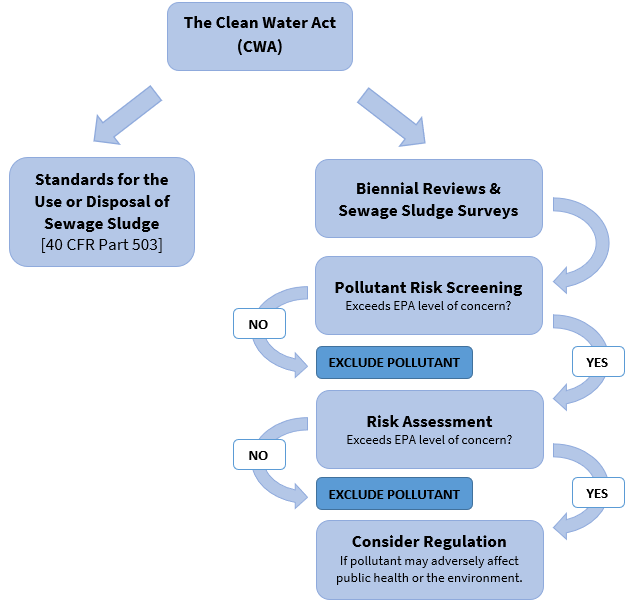During wastewater treatment liquid is separated from solids called sewage sludge this sludge contains pathogens protozoa and heavy metals that need to be treated further to eliminate the risks of using them for any purpose. Through years of research, scientists have developed a product called Biosolids that can improve soil for farming. What is Biosolid Fertilizer?
Biosolid Fertilizer contains abundant nutrients & organic matter that benefit soils. Properly treated, tested, & managed, biosolids can farmers & landowners are separated into 3 Classes according to the risk of odors, pathogens & metals:
“Exceptional Quality”
Class A-more treated
Class B-less treated
Biosolids that are to be beneficially used must meet federal and state requirements. Examples of beneficial use include application to agricultural land and reclamation sites. When applied to land at the appropriate agronomic rate, biosolids provide a number of benefits including nutrient addition, improved soil structure, and water reuse.
Biosolids Fertilizer
The use of biosolids in agriculture is controlled by what is known as the 503 regulations (40 CFR Part 503), which took effect in 1993. These federal regulations were developed by the U.S. Environmental Protection Agency after nearly 10 years of research on the possible risks due to diseases, heavy metals, or other components of the biosolids.

The regulations set limits on the amount of metals and pathogens that can be in biosolids; they also have requirements to reduce the possibility that the biosolids will attract flies or other pests that could spread disease. The law requires that specific conditions be met before biosolids can be applied to the land.
Biosolids are a product of the wastewater treatment process. During the wastewater treatment process, liquids are separated from the solids. Those solids are then treated physically and chemically to produce a semisolid, nutrient-rich product known as biosolids. The terms ‘biosolids’ and ‘sewage sludge’ are often used interchangeably.
Biosolids that are to be used for crop farming or land application must meet federal and state requirements. When applied to land at the appropriate agronomic rate, biosolids provide several benefits including nutrient addition, improved soil structure, and water reuse.
The Code of Federal Regulations requires that biosolids must be applied to land at the appropriate agronomic rate which is the sludge application rate designed to provide the amount of nitrogen needed by the crop or vegetation grown on the land.
The Agronomic Rate (When biosolids and other organic residuals are applied to soil, the amount used is determined by the agronomic rate) is dependent on crop type, geographic location, and soil characteristics.
Assistance in designing the agronomic rate should be obtained from a knowledgeable person, such as the local extension agent or the soil testing department at the Land Grant University in each state.
The 503 regulations divide biosolids that can be land applied into two groups based on the number of pathogens: Class A and Class B. Biosolids that meet standards for very low pathogen content are Class A. Class A biosolids that are considered “Exceptional Quality” meet the most stringent requirements.
- The metal content is low
- Pathogens are low or nonexistent
- Organic matter is stabilized
- Little odor or the possibility of attracting pests that spread disease. Exceptional Quality biosolids can be used on the farm without a site permit, or they can even be sold to consumers for garden use.
Class B biosolids have higher pathogen content than Class A, but they meet regulatory requirements for land application and are useful for fertilizer and soil conditioners. Class B biosolids must have a site permit obtained by the wastewater treatment facility for agricultural use.
The greatest advantage of Biosolids is a reduction in fertilizer costs. Biosolids typically have about 4 percent nitrogen. This nitrogen is released slowly over time. Biosolids also contain phosphorus and many micronutrients that can be beneficial to crop growth.
Another advantage is the addition of organic matter to the soil. Organic matter reduces surface runoff, reduces erosion, and improves the water- and nutrient-holding capacity of the soil. Studies have shown that increased organic matter content can improve yields. The addition of organic matter is particularly helpful in Georgia, where most soils are naturally low in organic matter.
The Disadvantages of Biosolids
The primary disadvantage to biosolids use are odors, the presence of certain metals, concern about pathogens, and potential over-application of nutrients. Wastewater treatment plants are also required to compile annual reports with this type of information.
If you are receiving biosolids, you should receive an annual summary of the amount of biosolids applied to each of your fields and the equivalent amount of fertilizer that has been applied. You should also request data on the concentrations of metals in the biosolids applied to your fields.
Class B biosolids are applied based on the amount of nitrogen (N) needed. However, more and more states are requiring the calculation of the agronomic rate based on phosphorus (P). Either way, the agronomic rate limits the amount of biosolids or other residuals applied, which further reduces risks from excess nutrients that could impact groundwater or surface water (P) or from traces of chemical contaminants.
JimGalloway Author/Editor

References:


